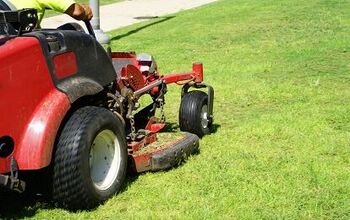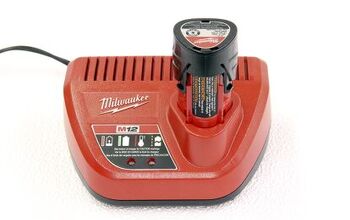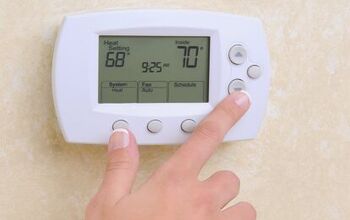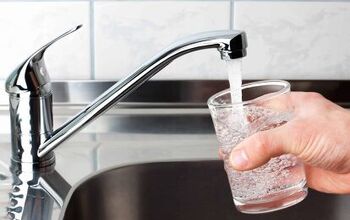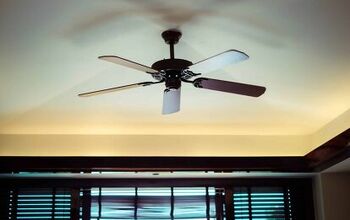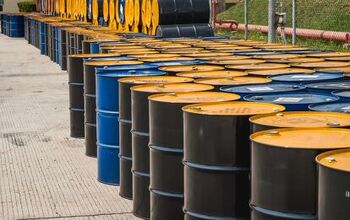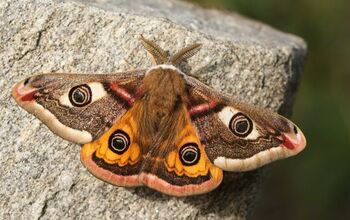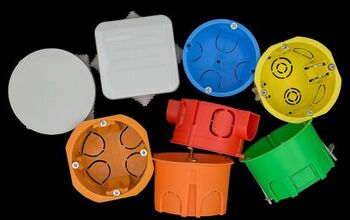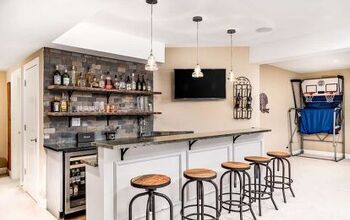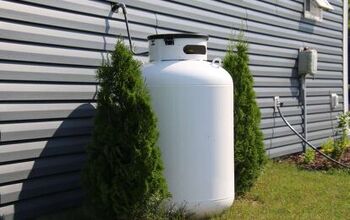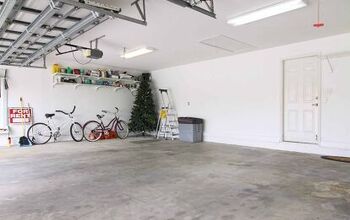How Often Should You Treat Your House For Termites? (Find Out Now!)

Termite damage costs homeowners an estimated $5 billion a year in repairs and remediation. They can eat away at the structure of your house until there’s nothing left. In order to prevent future harm, how often should you treat your house for termites?
You should treat your house for termites every 5 years. Physical termite barricades last 20 years, fumigation lasts 4 years, and bait stations should be replaced annually. Homes in dryer climates may require less frequent treatments, while ones in humid climates may require more frequent treatments.
Keep reading to learn what causes termites, about different treatment types, and how often you need to use each method!
Do You Need Pest Control Services?
Get free, zero-commitment quotes from pro contractors near you.

How Often Should You Treat Your House for Termites?
The frequency that you should treat your house for termites will depend on the treatment type itself.
Generally speaking, you should treat your house for termites every 5 years. Bait stations should be checked every 6 weeks and replaced annually. Perform termite inspections every year for newer homes and every 6 months for older homes, regardless of the treatment type.
If you notice any decay around your house, make sure to contact a termite specialist immediately. Time is of the essence in maintaining the stability of your home.
What Attracts Termites?
The best way to prevent any damage to your home is by knowing how termite infestations are caused.
Termites are attracted by moist environments; they are mostly found in areas with high humidity and warm weather. These critters thrive in soil, on dead trees, or on rotting wood. Colonies of termites congregate around buildings that have lawns (for food) or are close to lakes for water.
Dripping pipes and poor ventilation, which mostly affect older structures, are the ultimate disaster for any homeowner.
Ways Termites Cause Damage
There are two main ways termites cause damage- either by eating wood or making mud tubes used for shelter and transportation. These tubes allow them to move easily under your home’s foundation without having to chew through solid wood.
As they feed on the wood, they leave tiny holes that are usually the first sign of an infestation. It is recommended that homeowners inspect their home’s foundation by checking for any cracks or crevices that might hide the presence of termites.
Once you have detected termites, it is important to go through specific steps so as to not allow for any more damage to your home.
Signs of a Termite Infestation
There are a few signs to look for if you suspect termites are feeding on your house:
Mud TubesTermites create mud tubes or tunnels to help move dirt or water through their nest. These are often the main giveaway that there is termite activity in your home!
Swarms of TermitesTermites travel in packs. If you notice a swarm of termites flying towards your house, this is a bad sign.
It’s common to see swarms during mating season, but it’s still a good idea to have your home inspected.
Termite Droppings (also called Frass)Termite droppings, or frass, can be a major sign of an infestation. They’re multicolored and look like a pile of sawdust or salt and pepper. Unlike piles of debris, each drop usually has 6-sides like a hexagon.
Frass is often found around the mud tubes that termites create to help shuttle resources. If you detect either of these signs, call a professional as soon as possible.
Bubbling PaintIf you notice bubbling dried paint on the surface of your home or surrounding structures, it might be a sign of termite activity. Bubbling is often caused by moisture seeping into paint cracks, exposing the wood underneath.
This is indicative of termites within the paint layers on the exterior of your home.
Bucking/Visibly Damaged WoodAnother sign that your home could have termites is if you notice that wood on the walls or floor is buckling. This can happen to your walls if the termites have eaten away at the wood’s support beams.
Additionally, any wood that’s been visibly chewed-through is a dead giveaway. It’s important for people who see these symptoms to take preventative measures such as sealing any exterior cracks in the building.
Weak infrastructure can be incredibly dangerous to both you and your home’s other inhabitants.
Termite Treatment Types
There are two types of termite treatments- preventative and corrective. The more preventative work you do, the less possible damage you’ll have to correct later.
- Preventative termite practices are often used during the building or remodeling phase. They’re applied preemptively to prevent any damage after the house is built.
- Corrective termite practices are used after the detection of termites. This can involve applying treatment to damaged wood to the complete fumigation of infested structures.
Both are essential in any treatment plan.
Preventative Termite Practices
This is usually the most cost-effective approach. Although you’re spending a little extra cash up front, you’ll be spared thousands of dollars worth of repairs later down the road.
Preventative termite practices include borate treatments, wood treatments, or physical termite blockades.
Borate Termite TreatmentsA borate treatment is typically a combination of water and disodium octaborate tetrahydrate. It’s applied directly to the wood studs and infrastructure at the point of construction, right before the insulation and drywall go in.
In certain parts of the country, borate treatments cannot be used alone and must be combined with another final termiticide when the building phase is complete. This is usually done on the house’s exterior, under the foundation, and around pipes that might get eaten by termites.
Wood Termite TreatmentsWood treatments can also be used to prevent termite damage. They’re typically used on wood fences, decks, or other outside portions of the home.
Wood treatments essentially make the wood poisonous and kill the termites once ingested. If you’re worried about the chemicals in the wood treatment being harmful, don’t worry! If applied correctly, wood treatments only work on insects, not people and animals.
It’s important to note that wood treatments don’t penetrate to the core of the log. Because of this, even wood that is treated isn’t completely protected from termite damage.
Physical Termite BlockadesPhysical termite blockades can help prevent termites from eating at any wood on your home’s exterior. These barriers are usually installed during the initial phases of construction to protect structural timber and pipes.
There are two main types of termite blockades:
- Termite collars
- Termite shields
Termite collars, made of plastic or stainless steel mesh, are installed around pipes before concrete is poured. They prevent termites from entering via the building’s plumbing system.
Termite shields are sheets of alloy that are placed between stone or bricks and wooden beams. They are installed at 45-degree angles and extend about 3 inches beyond the conventional foundation. Because they aren’t the most effective method at preventing termite invasion, it is recommended to pair shields with another termite treatment.
Both barriers work in the same way- they create an obstacle between any wooden surfaces and termites.
Corrective Termite Practices
No one ever wants to hear the words, “You have termites.” Once you do, it’s time to take action.
Corrective termite practices include liquid or foam termite treatments, dry termite treatments, and termite bait stations. In the worst cases- fumigation will be necessary.
Liquid or Foam Termite TreatmentsLiquid termite treatments are usually done by creating holes in the soil or foundation of your house or by making a ditch system around the entire exterior. The termite technician will then pour a chemical liquid into the created voids.
Additionally, a diluted foam can be injected into any structural cracks for the same effect.
Liquid termite treatments are the most commonly used corrective practice and work best in structural timber, mulch, and trees.
Dry Termite TreatmentsDry termite treatments often involve exposing small, contained termite populations to dry termiticide to feed on. It looks like a powdery pile of food to these bugs.
Dry treatments work best for exterior applications where there is little insulation or ventilation present.
Termite Bait StationsTermite bait stations are chemically-treated, hollow, plastic tubes specifically designed for termites to travel in and out of the openings. There are in-ground or above-ground stations; however, the ones implanted into the soil are the most effective long-term solution.
The stations contain a liquid or powdered chemical that is attractive to termites. Once they find it, the termites share it with the rest of the population, and they all eventually die.
It’s important to consider that while bait stations are a dependable option, they can take months to work. The low dose of termiticides permeates through the entire colony slowly.
FumigationFumigation is usually the last resort, as it is very expensive and only used to treat the most aggressive stages of termite infestation. It is done by tenting an entire home or building for a few hours and applying a fumigant gas to the enclosed area.
Occupants must vacate for at least 2 days during this process. Fumigation is powerful enough to penetrate even the deepest termite hiding places.
This method is very effective at killing termites, but it’s also very dangerous, so follow all instructions while performing.
Remember- when choosing to perform any treatment, it’s always better to be safe than sorry.
Factors That Contribute to How Long Termite Treatments Last
There are a few elements that determine how long your termite treatments will last.
The average time a termite treatment lasts is 5 years. The type of termite, size of your house, infestation state, and the termite technician you chose all contribute to its longevity.
Treatment Type
How long the termite treatment lasts will heavily depend on the type of treatment you use.
Physical termite barricades have the least efficacy but the longest lifespan of 20 years. If you employ a liquid, borate, or wood treatment, it will likely last 5+ years. Fumigation is a close third, averaging 4 years of durability.
Lastly, dry termite treatments or bait stations must be checked every 6 weeks and only last about a year.
Termite Type
The type of termite you have in your building will also play a role in how long a termite treatment lasts. There are three major types of termites that have three different jobs: the worker, soldier, or swarmer.
The 3 major types of termites are:
- Drywood
- Dampwood
- Subterranean
Drywood termites feast on wood and live primarily in dead trees or old flooring. Their colonies are small, don’t require soil exposure, and respond best to borate wood or dry termite treatments.
Dampwood termites also live in wood, although they require a lot of moisture to survive. Liquid or foam treatments have been found to be most effective on dampwood termites. These methods work because they provide the high amount of moisture that dampwood termites are attracted to.
Moisture-sucking dry treatments can also provide relief from these types of pests, but it may take a bit longer.
Subterranean termites live in soil and are the most destructive and hardest to exterminate. The largest and most ferocious pest, Formosan termites, belong to this group. Their colonies can reach several million in size, and they can chew through wood faster than any other insect.
Subterranean termites are best treated using liquid termite treatments or bait stations. In severe cases, these quick-acting insects require fumigation.
Size and Layout of Your Home
The square-footage of your house will also be a factor in how long termite treatments last.
The bigger the square footage, the more materials there are for the termites to eat through. This means that treatment schemes have to be very extensive for larger houses.
Treatments in smaller homes are usually easier and generally last longer.
Stage of Infestation
Infestation degrees can play a role in how long termite treatments last.
Unbeknownst to you, termites could be feasting for years before you notice their presence. The worse the infestation is once discovered, the greater the risk of termites coming back.
If there is severe damage to structural substances both inside or outside your home, it’s recommended to replace the affected materials. This helps retain the integrity of your house for safety reasons and lessens the opportunity for termites to return.
How Experienced Your Termite Technician Is
Lastly, if your termite technician is on the ball and employs the best treatment strategy, your termite treatments will generally last longer.
You don’t want to do anything that isn’t necessary or is ineffective for your home. Instead of hiring someone based on price alone, make sure they also have good experience in the field!
How Much Does Termite Treatment Cost?
Corrective or preventive treatment can be a significant investment, but it will be worth it in the long run. The expense of the treatment depends on all the factors mentioned above.
On average, corrective termite treatment costs around $600 for the average 1,800 square-foot home. Preventative termite treatment costs about $3,000.
While preventative termite treatment is more expensive upfront, it may save you a lot of money in damages down the line.
Related Questions
What do termites sound like?
There are a variety of noises termites can make, but most go undetected by humans.Sometimes a termite infestation sounds like snapping or popping- this is the splintering of the wood planks being ingested by termites. Soldier termites can also generate rattling noises by banging their heads against the wall. This warns the rest of the population of danger.
How long does it take for termite treatment to work?
Before knowing the treatment timeline, you’ll need to determine what type of termites are in your home. Determining the species can be done through a soil inspection or with a chemical that detects their presence.Preventative termite treatments start working immediately, while corrective ones take about 45 days to achieve results. Six months later, all signs of termites should be completely extinct.After you have begun a course of action, you’ll want to determine how often you should check for new activity. Ideally, you’ll do so every week until the situation is under control.
Are termites good for the environment?
It might come as a surprise, but termites do serve a purpose like every other organism in our ecosystem.When they aren’t devouring your home, termites are good for the environment. They help to decompose dead plants and decaying tree bark to make room for new life.Termites also regulate the populations of other organisms, like ants and spiders. On the contrary, termites are a food source for larger insects like beetles and wasps.
Do You Need Pest Control Services?
Get free, zero-commitment quotes from pro contractors near you.

The Bottom Line
Termites are persistent pests that can cause major damage to your house over time.
How often should you treat your house for termites? The answer: About every 5 years.
Luckily, there are many options for homeowners who want to protect their property from termite infestation. The best choice and timeline of treatment will depend on the climate where you live, the type of termite you’re dealing with, and the degree of infestation.
Opting for preventative treatment and keeping up with annual inspections can save you a headache in the future!

Emily is a copywriter with over five years of experience in crafting content for the home renovation and remodeling industry. She loves house projects, whether it be painting a room or tweaking small design elements to transform a space. Her favorite aesthetic is french modern because of its clean lines and airy feeling! When not writing, Emily loves to travel and check out architectural details all over the world.
More by Emily Carr



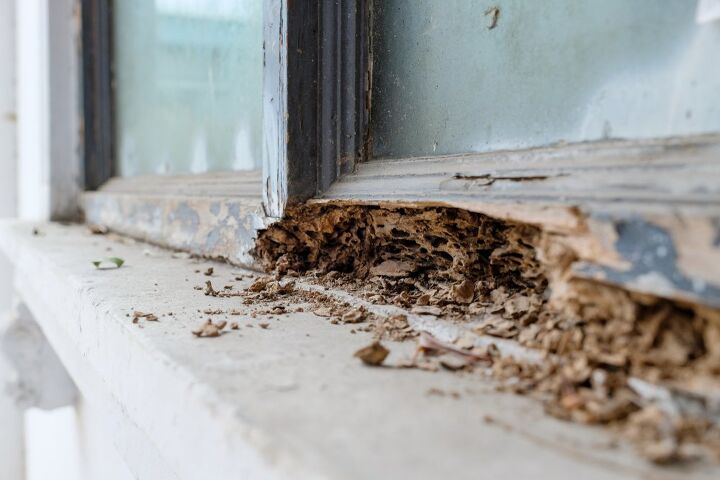








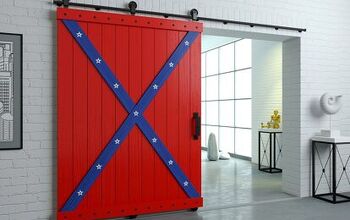
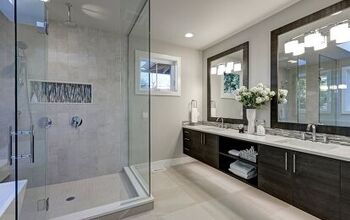
![How Much Weight Can a 4×4 Support Horizontally? [It Depends!]](https://cdn-fastly.upgradedhome.com/media/2023/07/31/9070333/how-much-weight-can-a-44-support-horizontally-it-depends.jpg?size=350x220)
